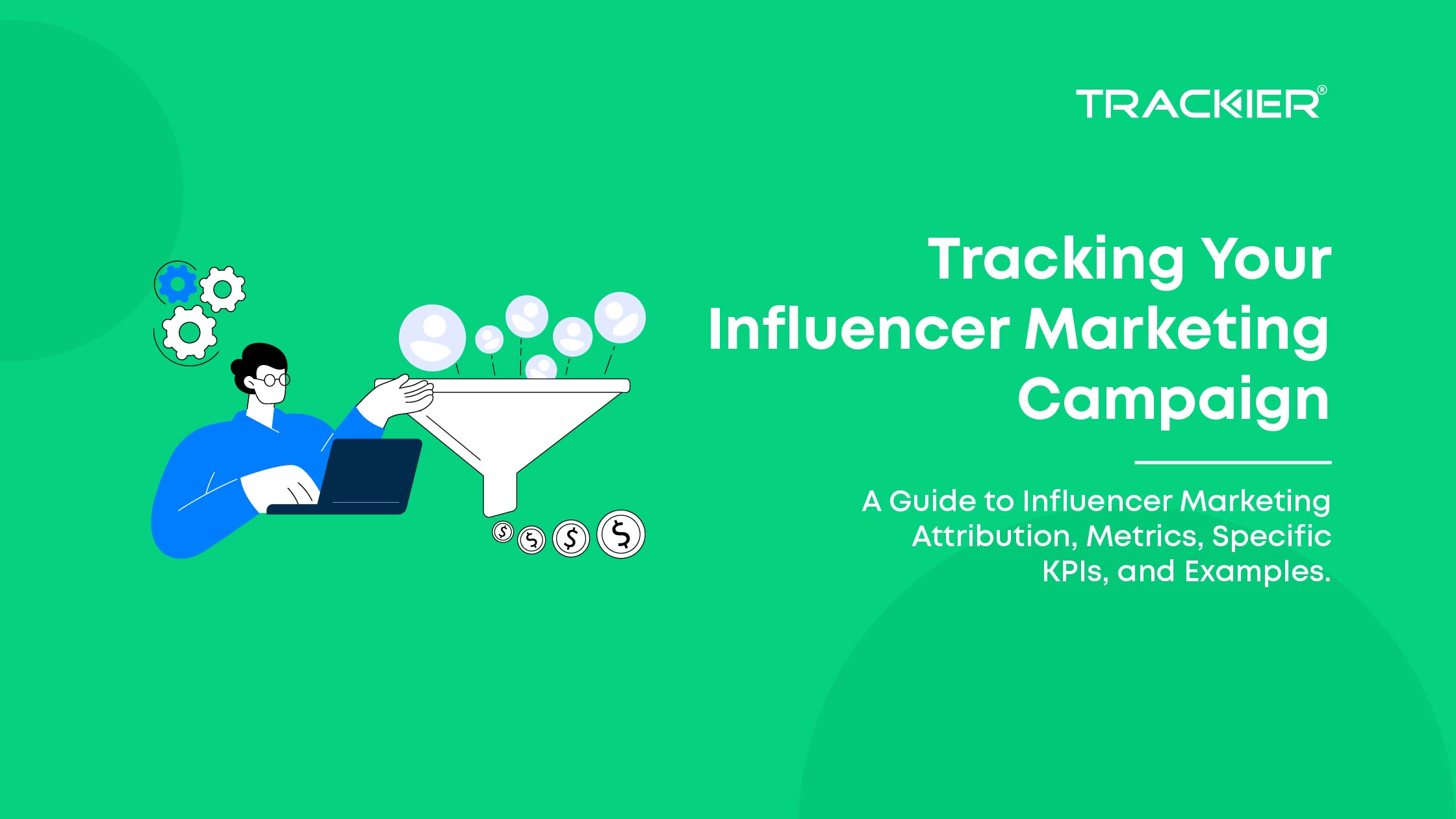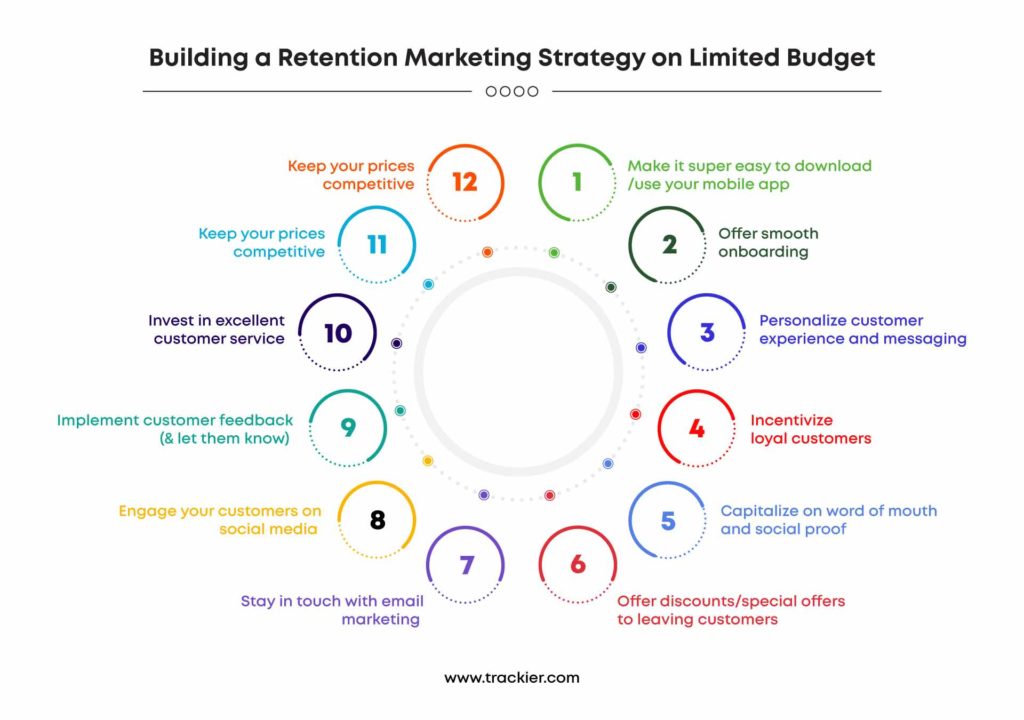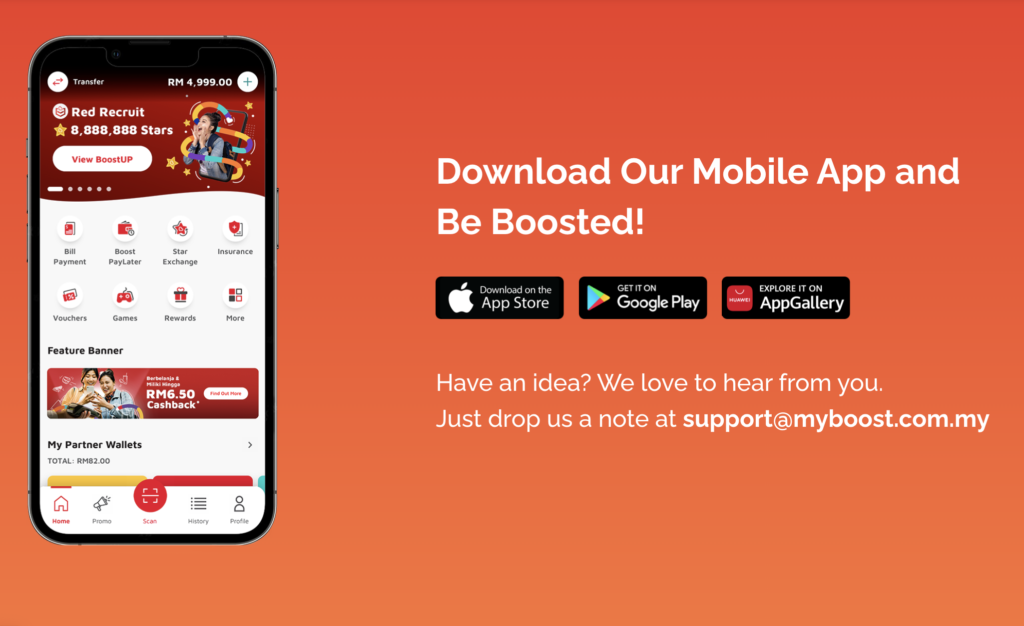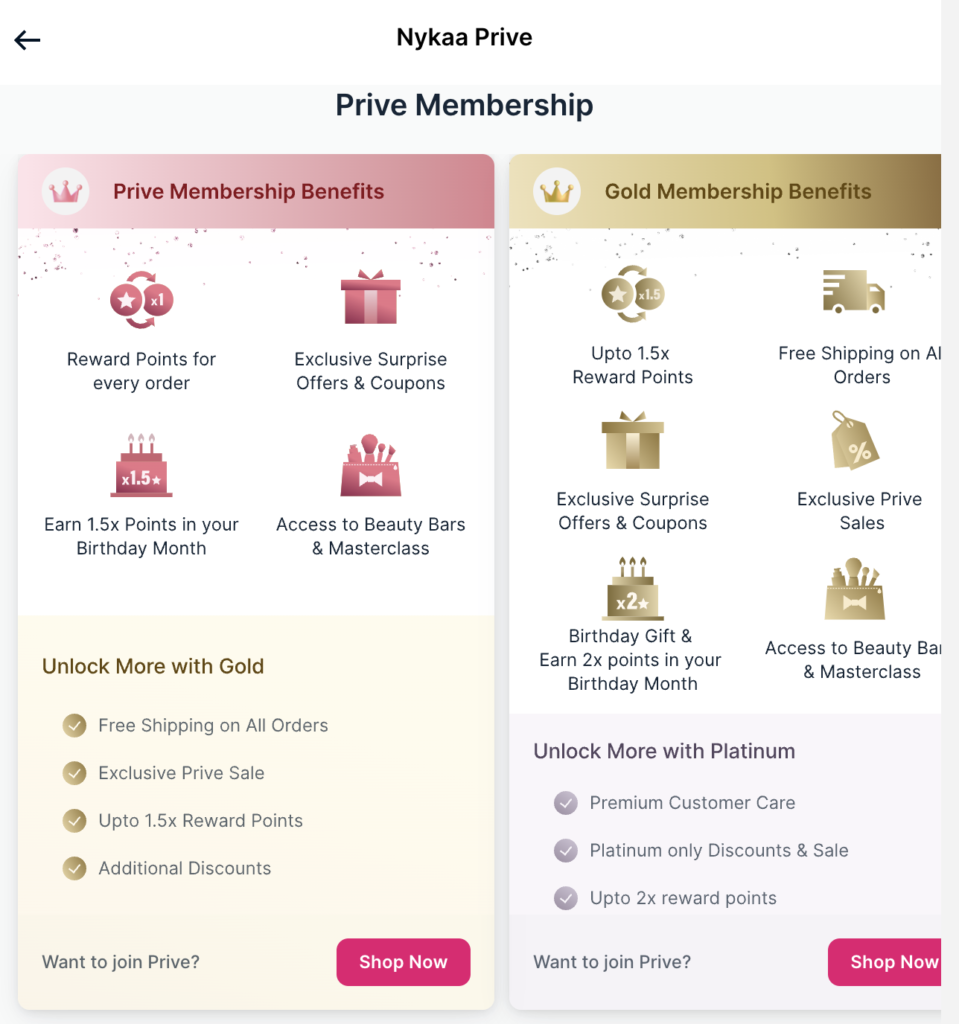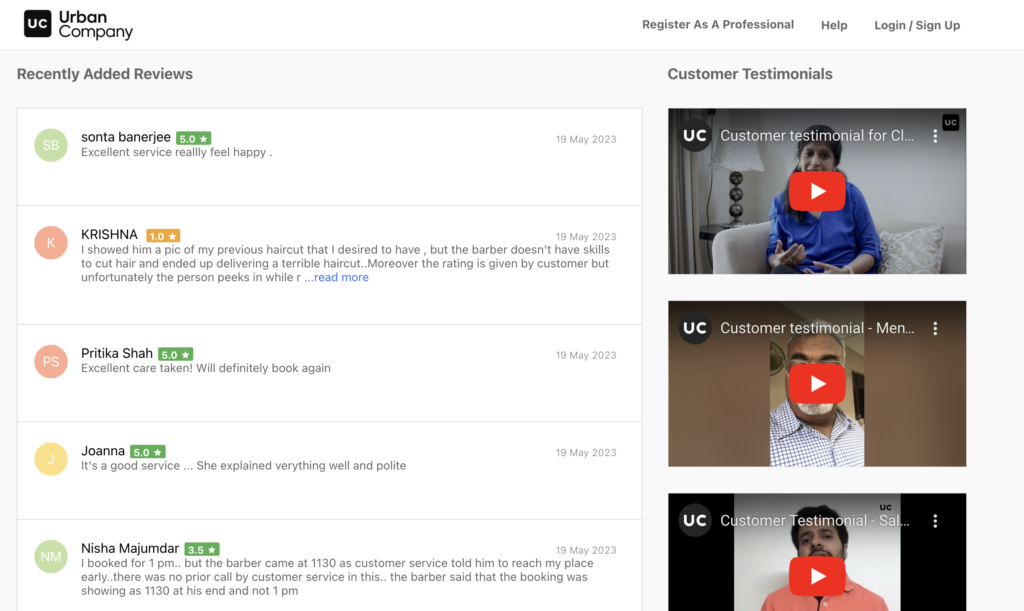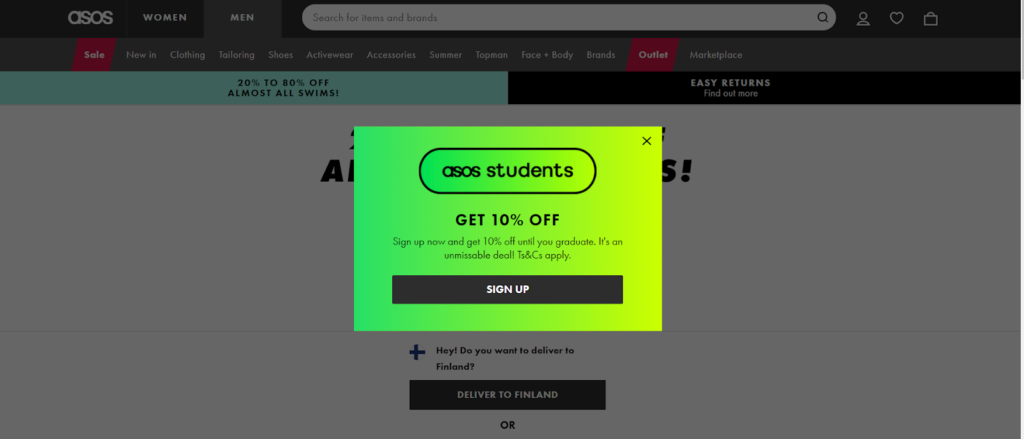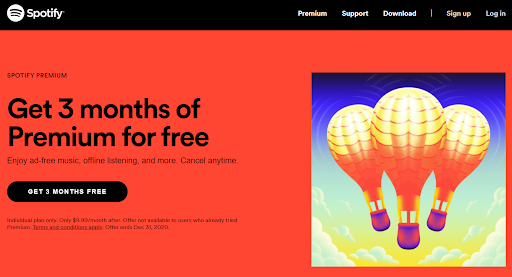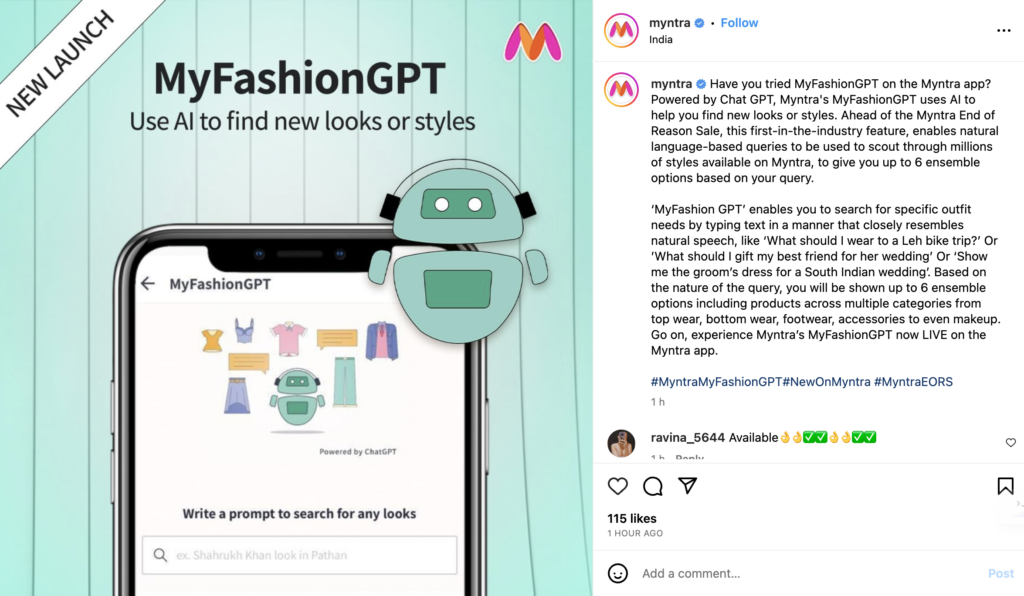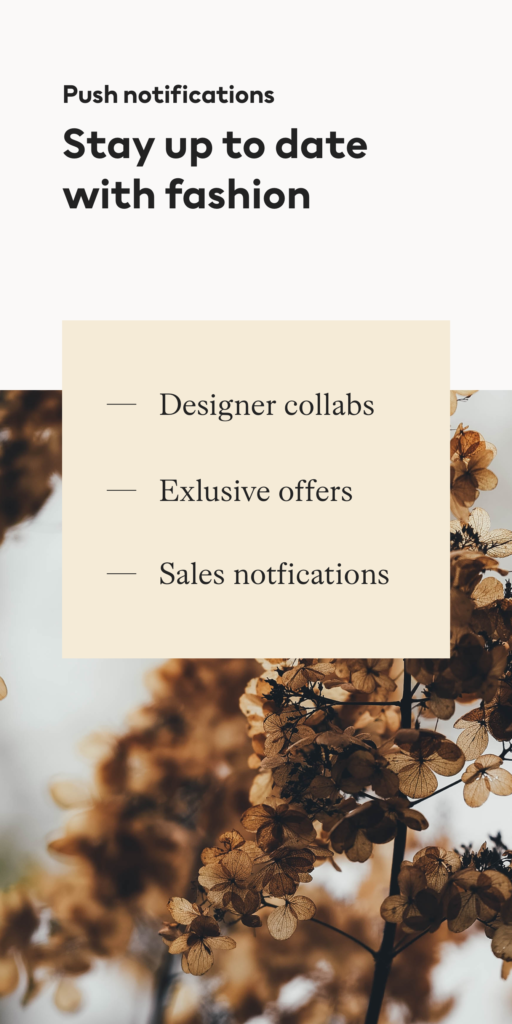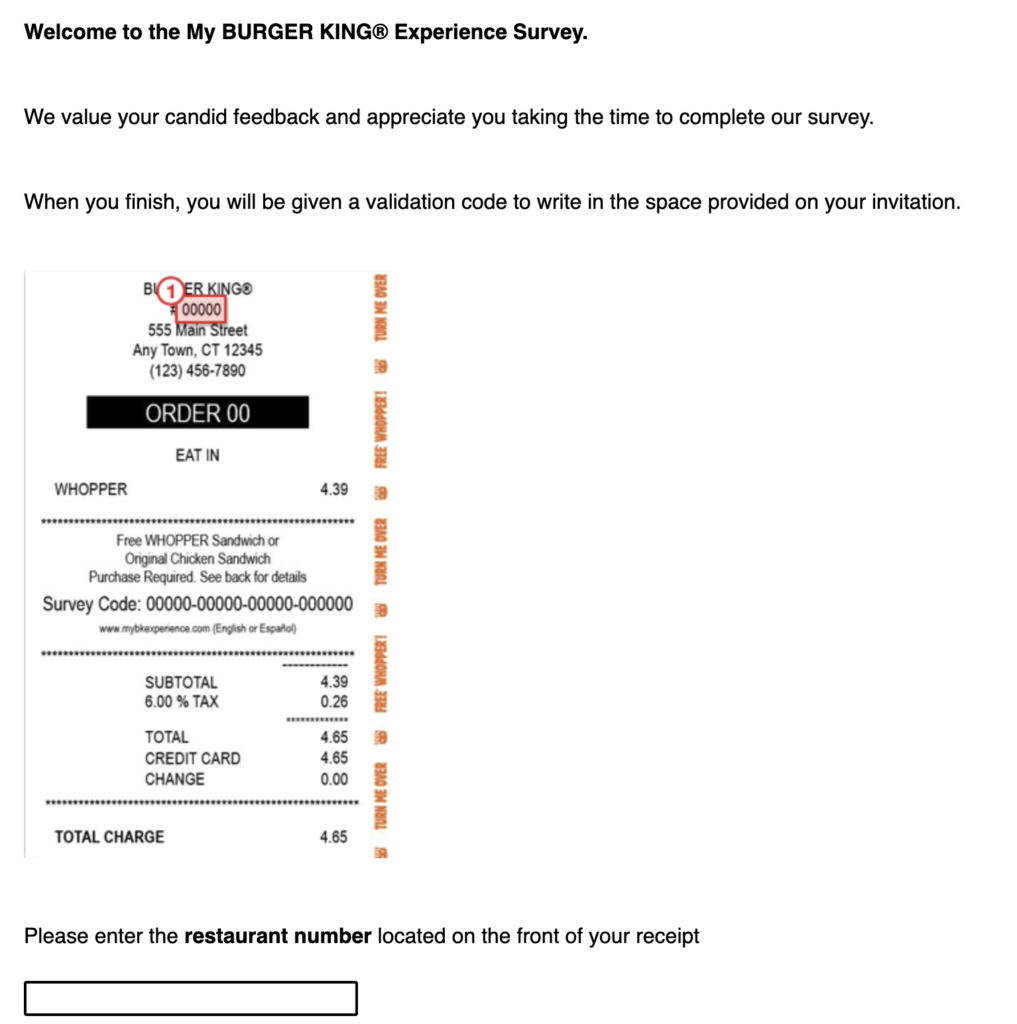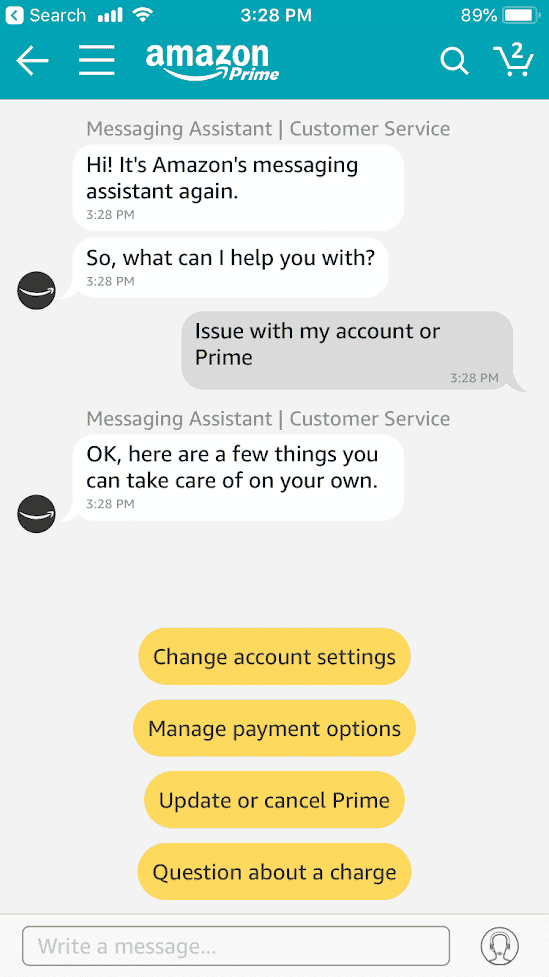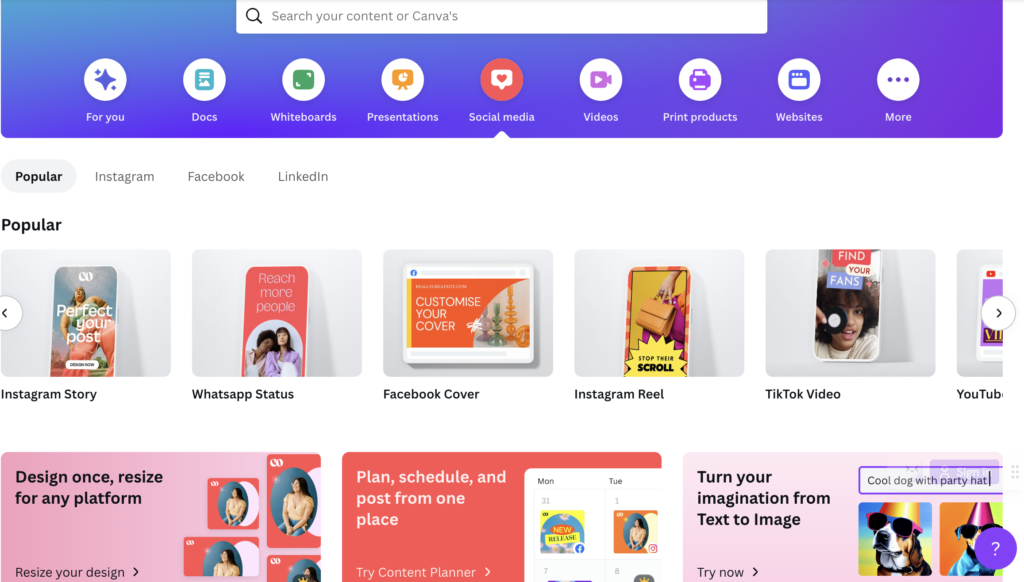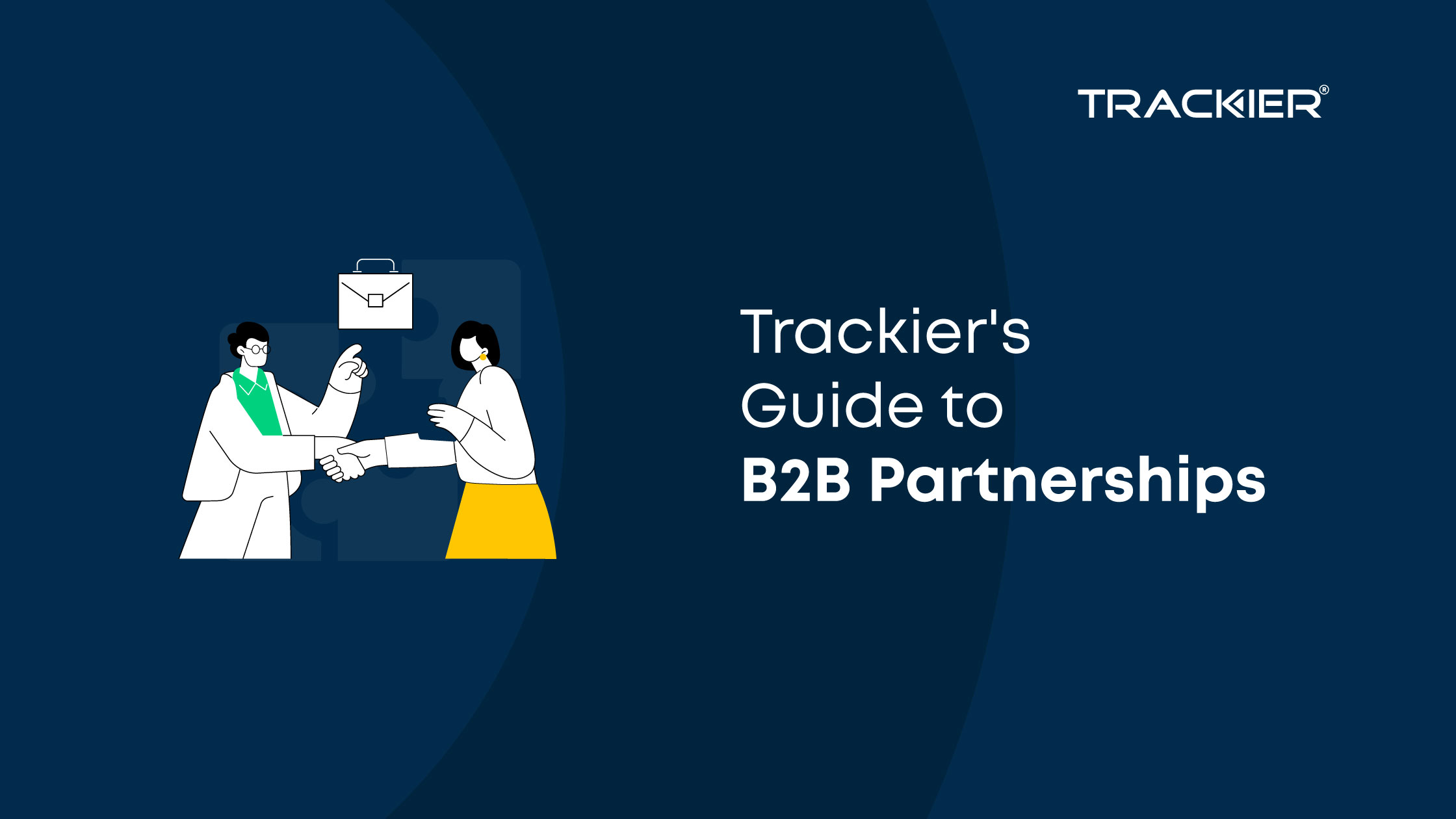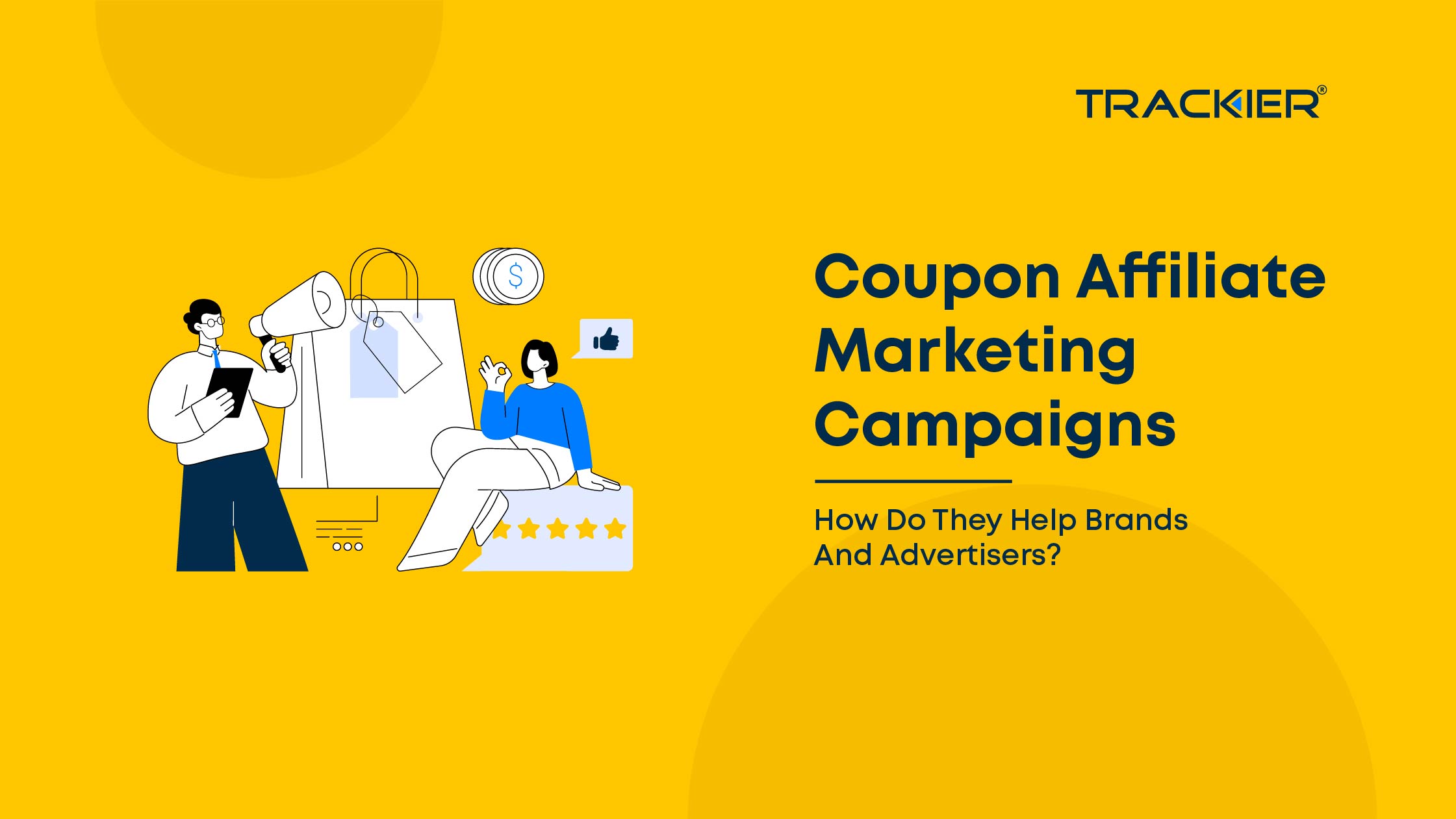Picture this: You want to buy a dishwasher – Where do you turn? An average Joe would start their buying journey with Amazon – the global e-commerce giant. Who could blame you? Throughout these years, Amazon has built a reputation for itself for being the go-to destination for every shopper.
How did this happen? This didn’t happen overnight but through a well-thought-out retention marketing strategy. Through a series of retention marketing campaigns, Amazon was able to register 93 percent membership renewal for a year in 2021! Sounds like a dream, right?
What does Amazon do differently to become the e-commerce giant that it is?
User-friendliness? Check. Loyalty program? Check. Customer service? Check. It ticks all the boxes.
You must be wondering why I’m telling you this story in a blog post for Retention Marketing Strategies. Well, before we get started on numerous cost-efficient retention strategies, it is important to understand why you need to invest your time and energy in the first place.
What is Retention Marketing and Why is it Important?
Retention marketing refers to the strategies and tactics implemented by businesses to engage, satisfy, and retain existing customers over a long period of time. It focuses on building strong relationships with customers, enhancing their loyalty, and maximizing their lifetime value.
Retention Marketing is important for many reasons, including:
- Acquiring new users is 5x costlier than retaining existing ones. So what would you prefer?
- Loyal customers add more value to the brand’s revenue than the new onboards.
- Satisfied customers and word of mouth is the one and only marketing strategy with a 100% return on investment.
- Retaining customers helps brands build sustainable success.
- Customer retention gives you ample of upselling and cross-selling opportunities to increase overall CLV.
Even if you’re registering good conversion rates and high customer acquisition rates, customer retention is the KPI you cannot overlook. Let’s put it like this: Company X has just started its online business for selling cakes. With just a couple of months of marketing, it successfully registered a low CAC (Customer Acquisition Cost) but the CAC/CLV ratio is greater than 1:3.
This is probably due to a number of reasons – Perhaps the company is not doing enough to retain its customers. Result? Wasted Customer Acquisition Costs and missed revenue opportunities.
Therefore, in this competitive landscape, it’s important to focus on providing value to users so that they continue purchasing from you, resulting in a higher customer lifetime value (CLV) and a lower customer acquisition cost (CAC).
Customer Retention vs. Customer Acquisition: What Should Be Your Priority?
When it comes to running a successful business, while on a limited budget, it is important to maintain an equilibrium between Customer Acquisition and Customer Retention. As your business scales, it’s essential to strike the right balance between the two.
So what should be your focus right now? It depends on the stage of your business. If you’re just starting out, customer acquisition should be higher on your priority list. At that stage, you need to build a constant revenue stream by expanding your user base.
On the other hand, if you’re already having a good number of user onboarding, it’s important to focus on providing value to your existing customers to keep them engaged with your brand to generate more revenue in the form of renewals and repeat purchases.
Ultimately, it’s the ideal balance between customer acquisition and customer retention that holds the key to a successful brand that customers love to buy from and stay loyal to.
So now you know how important it is to invest in a retention marketing strategy. But how to get started if you have a budget constraint? While retention marketing can be as cost-intensive as you can think, there are numerous ways you can retain your customers even on a limited budget.
Let’s dive in.
12 Retention Marketing Strategies For Brands Running on Limited Budget
A retention marketing strategy can be a cash burner at times, but it’s worth it. Reasons? It builds loyal customers. It increases Customer Lifetime Value. It reduces Customer Acquisition Costs. And lastly, it generates more revenue from the existing customer base.
This doesn’t mean you need to overspend beyond your budget. There are several ways you can implement your customer retention strategies and achieve your goals.
Make it super easy to download/use your mobile app.
Would you use a mobile app if you had to go through a complicated process before accessing its features? What if I say the app is an even more complicated maze to use? Let’s be honest, you wouldn’t!
Your users are likely to drop out if they face challenges while downloading and using the app.
The solution? Keep your users in mind and heart while building your app and its UX. Keep it clutter-free, clean, and simple.
How to detect a bad UX?
Use heat mapping and analytics tools like Hotjar to identify red-flag areas and remove them.
How to improve your mobile app UX?
- Remove pop-ups, and banners that block the thumb zone.
- Simplify the onboarding process in one or two steps.
- Analyze MAU and DAU to track the monthly/daily influx of users on your mobile app and identify where you’re losing them.
- Conduct surveys asking users for their feedback on your mobile app.
Customer Retention Strategy Case Study: Starbucks
Starbucks, the world’s most valued coffee brand, is the prime example of how to use good user experience to increase customer retention on the mobile app. Though on the surface it’s just a loyalty program, what’s in it that makes users come back for more?
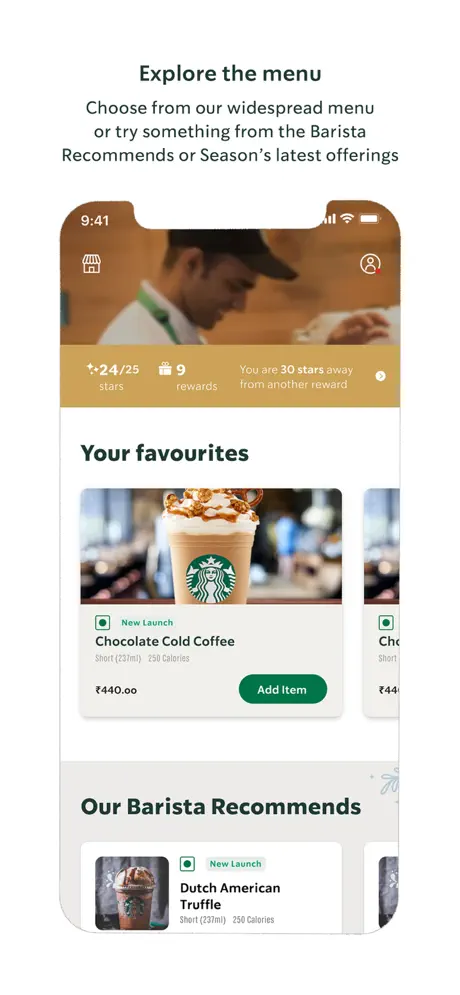
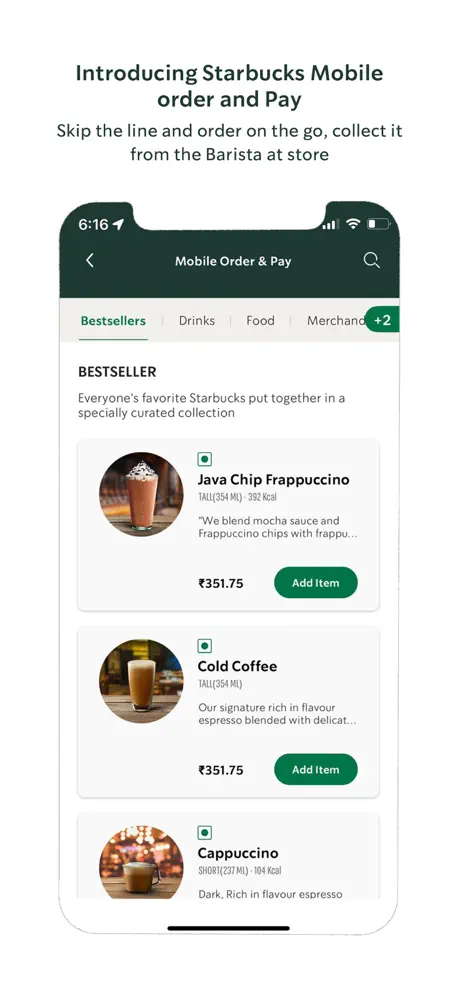
If you log in, you will see that the app is a lot more than just a loyalty program app. You can do so much more on the app, including:
- Make your own Spotify playlist.
- Make payment in advance to avoid the queue.
- Real-time updates on ‘now playing’ overhead in Starbucks stores.
- Recall your favorite order items.
- Geo-location of your nearest Starbucks.
- Gamified tasks to earn reward points.
It worked out pretty well for Starbucks so much so that the company’s CFO Scott Maw said that the majority of the company’s sales come from people who are digitally engaged with the brand through the app.
Personalize. Personalize. Personalize.
It is known to everyone that personalization has been the buzzword for marketing for the past few years. But it’s not just a buzzword; it’s the secret sauce for keeping customers coming back for more.
Not just in messaging, personalization extends to user experience, offers, rewards, and services. Brands that build an emotional connection with users using personalization see more returning customers than brands that don’t. In fact, personalization is one of the most important factors behind a customer’s buying decision.
According to McKinsey, “71% percent of consumers expect companies to deliver personalized interactions. And 76% get frustrated when this doesn’t happen.”
To get this better, picture a coffee cup in your mind. There’s a plain, paper cup with a piping hot latte while there’s a cup with your name on it. Which one would you choose? I guess the latter.
This phenomenon is known as Salience – which means that the content of the cup grabs your attention from the outset. This is how human psychology works – we turn our heads only when we hear our name (the name is just one of many types of personalization).
How to introduce personalization in marketing without burning too much cash?
- Segment the audience and create cohorts on the basis of each individual’s customer experience and journey on your mobile app. Tailor your messaging according to each cohort.
- Send emails and newsletters on the basis of cohorts – personalize content in each email on the basis of their preferences, buying (transaction) history, and user journey.
- Use mobile app analytics to understand which parts of your apps are successful in engaging customers and which are not.
- Engage with your users on social media with targeted messaging. Practice social listening to observe what people are saying about your brand.
Customer Retention Strategy Case Study: Boost
Boost, a Malaysian e-wallet platform, increased its customer retention by 5x using personalization in marketing. With a vast user base of 7 million users, it was a challenge for Boost to retain those users on their platform, with several competitors in the picture.
What did they do? They analyzed their user data like demographics, age, gender, purchase history, and on-app behavior on a granular level to create a personalized experience on their mobile app for their users.
They used a combination of in-app messages, push notifications, and emails personalized to each user’s purchase (and add-to-cart) history to engage them continuously.
Incentivize Loyal Customers
You went to a coffee shop and ordered a cup of coffee. You got the coffee, paid the bill, and walked out of the store. How was the experience? Meh? Right?
Now picture yourself walking into your favorite coffee shop. You order that same coffee, but this time you got a free blueberry muffin alongside.
Which one would you prefer? Of course, the second one. You’re more likely to engage with Coffee Shop B in the long term than Coffee Shop A.
The second coffee shop ‘incentivized’ you as a loyal customer with a free cookie. This is known as a loyalty program or retention program.
If you want to keep your customers coming back for more, a loyalty program is a sure-shot way to do that.
However, the incentive doesn’t always need to be monetary. Here’s how you can structure your loyalty program on different types of incentives.
- Offer exclusive discounts, cashback, or other perks to keep them coming back.
- Send personalized offers to your loyal customers based on their past purchases or interactions with your app.
- Offer loyal customers early access to new features or products that you’re launching. This makes them feel special and valued, and can also create buzz around your app.
Customer Retention Strategy Case Study: Nykaa
Nykaa, an Indian beauty and makeup e-commerce company, used Loyalty Program called Nykaa Prive to increase their customer retention.
They introduced multiple tiers of loyalty programs to incentivize regular customers who shopped via Nykaa. The program tiered from Silver all the way to Platinum with varying rewards for each level.
A customer needs to shop for INR 2000 or more per annum to enter the loyalty program and once they reach the Platinum level, they need to retain the membership by shopping worth INR 10,000 per annum.
That isn’t all. Nykaa Prive program included many more membership benefits, including:
- Birthday gifts
- 2X, 3X reward points that can be redeemed against cart value.
- Premium customer support
- Free shipping on all orders above INR 299
As of 2020, Nykaa enjoys a customer retention rate of 70%, which is partly due to its lucrative loyal program.
Cash In on Word of Mouth and Social Proof
Being humble doesn’t work in marketing. Do people love your brand? Yes? Don’t be shy to scream from the rooftop. If your brand enjoys positive feedback and word of mouth, capitalize on it as much as you can.
Here’s how you can turn positive feedback and social proof in your favor:
- Create a testimonial section on your mobile app, telling visitors how your users love your service/product.
- Convert customer feedback into short videos and distribute them on multiple channels including social media and newsletters.
- Wear positive reviews as a badge of honor everywhere your brand is represented.
Customer Retention Strategy Case Study: Urban Company
Urban Company, a leading online platform connecting customers with home service professionals, has taken customer retention to new heights by harnessing the power of social proof and user-generated content. Through strategic initiatives and innovative approaches, Urban Company has successfully built trust, engagement, and loyalty among its customer base.
Urban Company clocked over 10 million downloads on Google Play Store alone. However, with such a wide user base across the country, it faced the challenge of retaining customers on its platform.
To overcome this, they adopted a combination of retention marketing strategies, including capitalizing on social proofs – reviews and feedback.
As a part of their social media marketing efforts, Urban Company posts user reviews and testimonials on their social media platforms. Apart from that, the brand also publishes user reviews on their mobile app, to build trust among the customers, making them come back for more services.
Offer Discounts/Special Offers to Leaving Users
Users come and go, that’s how the mobile business works. But there’s a way you can retain your leaving users and make them spend money on your mobile app. When you see signs of your users leaving your app, take proactive measures to win them back.
Here’s how you can retain your leaving users.
- Offer special discounts to leaving users.
- Exit intent popup for leaving users.
- Extend loyalty by offering membership.
- Reach out to existing users asking them for feedback.
Customer Retention Strategy Case Study: ASOS
ASOS, a British online fashion and cosmetic retailer, offers discounts to users who exit the app without making a purchase. When users try to exit the app, abandoning a cart, ASOS displays an exit-intent popup to exiting users, encouraging users to make a purchase.
According to the brand itself, users return to ASOS once every fortnight to make a purchase. Using a combination of several retention marketing strategies, it enjoys a retention rate of 96%!
Communicate with your users via Email Marketing
Out of all email users, 99% of them check their emails every day – which means there are countless opportunities for brands to engage, connect with and convert existing users.
If you haven’t tapped into the potential of email marketing (yet) for customer retention, here’s an easy way to do it.
- Create personalized email journeys. Using a Cohort Report, you can analyze the behavior of a user group and engage them with personalized emails. To understand how to analyze ‘Cohort Reports’ for better retargeting, here’s a guide to help you sail.
- Send out incomplete transaction emails to users who are trying to complete an action on your mobile app. Try to find out the reason they dropped it midway, and offer them support (or even an offer to give them a push).
- Keep your customers engaged using giveaways, offers, discounts, and rewards. Users are more likely to engage with your mobile app if they’re kept involved and hooked.
Customer Retention Strategy Case Study: Spotify
Spotify, the Swedish digital music service company has deployed a copybook email campaigns strategy in place to improve customer retention on their mobile app.
Spotify app users receive regular updates on what’s new at Spotify, membership plans, offers, new features, games, and quizzes. This keeps its users hooked on the mobile app and reinforces the brand name in their minds.
Enjoying 433 million unique users on its mobile app (as of 2022), Spotify sends out succinct, precise, and aesthetically pleasing emails to users on joining apart from the periodic offers, and membership update emails. Check out one of the emails you get when you sign up on Spotify.
Engage Your Customers on Social Media
Whatever you do in business, it ought to be on social media. It’s not just a platform for likes and shares, but also for boosting customer retention. How?
Social media is the most used and successful mode to cultivate a relationship with your users and engage them throughout their buying journey.
With 59% of the global population using social media and spending around 2 hours 32 minutes a day on some or the other social media platform, it’s needless to say that it’s the most yielding platform to get your brand noticed by people.
If you haven’t been using social media to boost customer retention on your mobile app, this is your cue to get started.
- Build a relationship with your following on social media. If you’re new, create content that addresses your target audience’s pain points and build a community with shared interests.
- Create content that’s not just promotional but also helps alleviate their pain points. As a general rule of thumb, Use the 5:1 ratio: For every 5 times you post helpful content, share a promotional post.
- Listen to what people are saying about your brand. You can use a social listening tool or you can simply follow the hashtags that represent your industry and track the content that is being posted around them. Engage wherever you can add value.
- Ask users to share their feedback on social media (if they’re happy with it). Happy customers are the best brand ambassadors, isn’t it?
Customer Retention Strategy Case Study: Myntra
Myntra, a popular online fashion retailer, utilizes social media to acquire new customers and engage and retain old customers via a series of entertaining content targeting users at every stage of their buying journey.
They post diverse kinds of content on social media including giveaways, sale alerts, offers, contests, etc. to keep their customers informed and engaged. They also have a solid social listening mechanism in place that leaves no stone unturned when it comes to pacifying dissatisfied users.
Apart from this, Myntra also collaborates with its users, encouraging them to share their videos and reels wearing Myntra outfits with a specific set of hashtags. Clever, isn’t it?
The mobile app alone enjoys 740,000 monthly users as of 2021 and this is proof of Mynta’s impeccable customer retention strategy that relies heavily on social media.
Offer Smooth Onboarding
Imagine stepping into a restaurant only to be greeted by a grumpy waiter who dampens your vibe. Would you have a bon appétit after this? Probably, not.
This explains the importance of having a smooth onboarding experience – be it a restaurant or a mobile app. A good and seamless onboarding experience sets a positive foundation for news users, increasing their likelihood of doing business with you.
Just like a friendly, attentive waiter, offer a warm welcome to the news users – be it in a form of a popup message, a welcome email, or the best, a welcome offer.
Users will remember how you treated them when they joined you and would love to do repeat purchases from you.
Customer Retention Strategy Case Study: H&M
H&M, a multinational clothing company, not only offers a smooth onboarding experience but also personalizes clothing suggestions based on user data. Right from the sign-up to the first order, the mobile app makes the process super-easy, making customers wanting for more.
Here’s what H&M has been doing right:
- Multiple sign-up options, including login using social accounts.
- A 2-step onboarding process using mobile number and OTP.
- Welcome offers for new users.
- Personalized recommendations based on user data.
Implement Customer Feedback (& Let Them Know)
Customers love it when you listen to their feedback. In fact, 73% of consumers say a good experience is key in influencing their brand loyalties. So if you want to retain customers on your mobile app, building loyalty is a requisite – and for that focusing on customer feedback is essential.
To build a great customer experience, implementing customer feedback is paramount. Create a separate section on your mobile app where customers can submit their feedback. But your job doesn’t get done there. The next step is to implement those feedback and lastly, let your customers know that you heard them.
Customer Retention Strategy Case Study: Burger King
Burger King, a household name among burger lovers, takes customer feedback pretty seriously. They’ve launched a separate website called My BK Experience, where customers can submit their feedback and suggestions related to the brand’s services.
The team works on this feedback to improve the customer experience in their outlets and improve the CSAT score. This in turn increased their customer retention rate.
Invest in Excellent Customer Service
Would you like to do business with a brand that doesn’t give two hoots about customer grievances? Nobody would. In fact, 96% of customers say customer service is important in their choice of loyalty to a brand. 96%, that’s a lot!
So now you know that good customer service is not just any ordinary perk, but a vital component in building brand loyalty. What would be your next step?
Set up a customer service desk if you haven’t yet. If you already have a customer service department in place, check how they’re functioning, calculate the FCR (First Call Resolution) Rate, and identify areas of improvement.
Even if you have to invest some extra bucks in customer service, it’s worth the effort. Providing exceptional customer service not only helps you retain existing customers but also attracts new ones through positive word-of-mouth.
It’s an investment that pays off in the long run, as happy customers are more likely to become repeat customers and advocates for your brand.
Customer Retention Strategy Case Study: Amazon
You don’t have to think twice when someone asks you about the brand with the best customer service mechanism in place. Amazon is the #1 brand when it comes to customer support.
The e-commerce giant offers multiple channels through which customers can reach out to their support team – chat, email and phone. The company knew that they were not just providing products through their app, but also offering convenience and comfort to their customers. Isn’t that something customers would love to have?
The results are pretty obvious. The brand registered a close-to-perfect customer retention rate with 93% of customers renewing their Prime membership in 2021.
Keep Your Prices Competitive
Admit it, there must be hundreds of other apps that are offering the same services as your app does. So what gives you an extra edge over them? It could be the price. Offering competitive prices not only attracts new users but also keeps them loyal to your app. So make sure to keep an eye on the market and adjust your pricing strategy accordingly.
Conduct market research on your competitors to understand what your competitors are offering and at what prices. Strategically adjust to value-based pricing – not too high, not too low.
Innovate Your Offering Consistently
The competition in the mobile app market is fierce. Don’t believe us, believe the numbers. Apple Store alone has 1.96 million apps available for download!
Innovation is one of the ways to beat the competition. Consistently innovating your offering allows you to meet the evolving needs and expectations of your customers.
By introducing new features, functionalities, or improvements to your mobile app, you can provide a unique and engaging experience that keeps users coming back for more.
The best way to go about it is to ask users what more they want on your mobile app. Implement those features and voila!
Customer Retention Strategy Case Study: Canva
Canva always knows what’s trending and how it can stay relevant in this dynamic environment. The photo editing app has innovated by leaps and bounds ever since it was founded in 2012.
Looking at the social media trends around, Canva has added many new and exciting features like meme templates, reel templates, Instagram story templates, etc. to stay relevant among the social media crazy audience.
As of 2023, Canva enjoys 125+ million users on its mobile app and desktop version.
How Marketers Can Use Technology for Retention Marketing Strategies
The world we live in is dynamic and unpredictable, but the best part is that technology is available to solve any problem that we face. For customer retention too, there are ample number of tools to help you sail.
Here’s how you can use technology for retention marketing on your mobile app.
- Personalization: Use data analytics tools like heatmaps to understand your customers’ journey, preferences, needs, etc. on your mobile app. Use this data to deliver personalized experiences, offers, and recommendations.
- Automation: Reduce efforts on manual processes like customer support, campaign management, and retention email marketing with automation tools available in the market. You can explore a good number of marketing automation tools available on Producthunt.
- Relationship Management: Use CRMs like Sprinklr, Zoho, etc. to manage customer data, track interactions, and maintain a comprehensive view of each customer.
- Social Listening: Leverage technology platforms to gather customer feedback and insights. Implement online surveys, social listening tools, and sentiment analysis to understand customer sentiment and identify areas for improvement.
- Omnichannel Marketing: Implement cross-channel marketing automation, integrate data across touchpoints, and provide a unified experience across devices.
- Predictive Analytics: Employ advanced analytics techniques such as predictive modeling and machine learning to anticipate customer behavior and identify potential churn risks.
- Continuous Optimization: Utilize data analytics and A/B testing to continuously optimize marketing campaigns, user experiences, and customer touchpoints.
Using Trackier MMP Data for Retention Marketing Strategies
If you’ve been using Trackier’s Mobile Measurement Partner, you’re already equipped with features to understand customer behavior and use the data to your advantage to improve customer retention on your mobile app.
With the help of its Retention Reports, you can understand how your users are interacting with your mobile app and for how long. Additionally, you can analyze the journey of each customer using the Customer Report and identify high LTV customers to channel your retention strategies on them.
If you haven’t enrolled for Trackier’s Mobile Measurement Partner, it’s never too late to do the right thing. We offer a free demo for you to understand the usability of the platform and to check whether our features align with your marketing objectives or not.
Booking a free demo is seamless; you simply have to fill out the form and our team would schedule the demo as per your availability.


